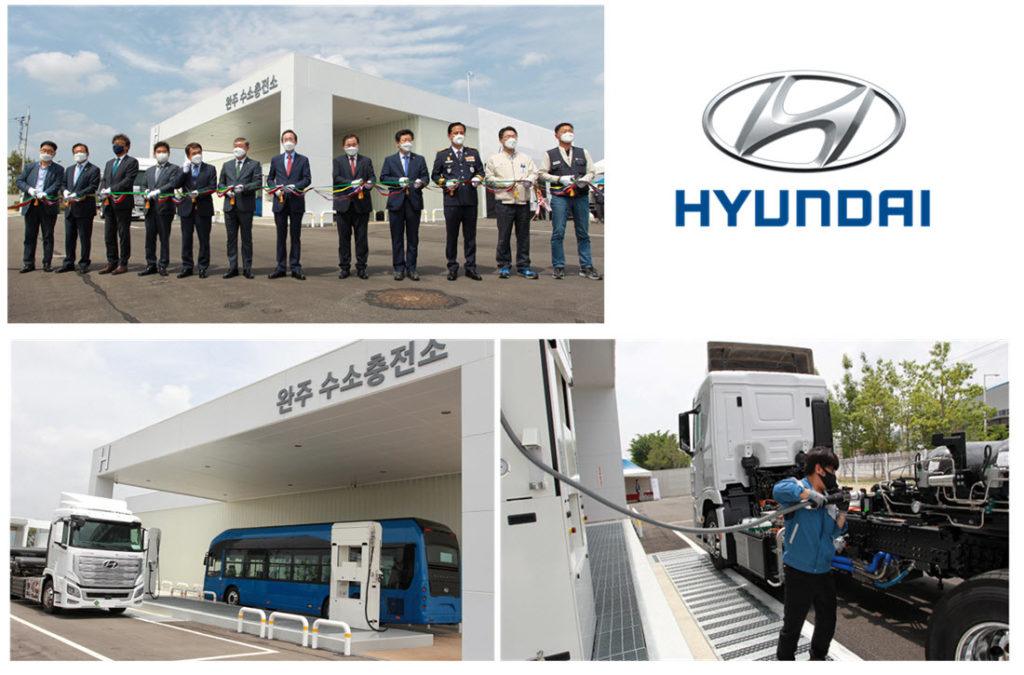
According to the International Energy Agency, hydrogen “production is responsible for annual CO 2 emissions equivalent to those of Indonesia and the United Kingdom combined.” Until we change the processes from which we derive hydrogen fuel, it will continue to emit planet-warming emissions and further contribute to the climate crisis. Right now, most production of hydrogen is from natural gas or coal, making its creation extremely dirty. However, while hydrogen fuel is a promising power source for vehicles, especially long-haul trucks or ships which are more challenging to electrify, there’s still a long way to go before the industry is able to sustainably produce the fuel. The only by-product released after the reaction is water vapor. Using the hydrogen fuel in the tank, the vehicle’s motor will be powered from the chemical reaction between oxygen and the hydrogen gas. The methodology of fueling a hydrogen fuel cell car is almost identical to a typical gas-powered vehicle: you drive up to a station with a pump, you insert the pump into where the tank gasket is, and you wait for it to fill up. Another type of clean technology is hydrogen fuel cell vehicles, which also have electric motors but differ in that they are powered by hydrogen gas. While electric vehicles have long been the most popular and well-known among clean energy vehicles, they aren’t the only clean cars available. Instead of going into a gas station to fill up your tank, you either find a charging station or charge from home using your own power outlets. For example, a familiar clean energy vehicle we have come to know is the electric car, which has an electric motor powered by charged batteries instead of fuel. When you drive a clean energy vehicle, it isn’t releasing planet-warming emissions. When I first heard the term “clean energy vehicles” come into the conversation, my first thought was, “will we actually be able to do that here?” Clean Energy Vehiclesįor context, clean energy vehicles are powered by resources that don’t combust fossil fuels when in use. You know that iconic pick-up truck, the Ford F-150? That’s still the most popular selling car in the United States today.

The thing is, fossil fuel-powered trucks are the heart and soul of the American car industry. So, if we want to mitigate the effects of climate change, one of our primary focuses should be figuring out ways to lower the emissions created from our methods of transportation. And year after year, research has shown that the number one source of greenhouse gas emissions in the United States comes from the transportation sector. The invention of the automobile changed the world forever, but this ground-breaking innovation came at a cost: our dependence on fossil fuels to power motor vehicles for years has resulted in billions of tons of carbon dioxide emissions. My dad worked at Ford Motor Company, and the majority of my neighbors, friends, and classmates had at least one parent who also worked for one of the “Big 3” (Ford Motor Company, General Motors Company, and Chrysler). Growing up, my school field trips were to the Ford River Rouge Plant, or the General Motors Manufacturing Plant, or Henry Ford’s Greenfield Village. As someone who was raised in Motor City (Detroit, MI), it’s a bit of an understatement to say that I “get” how significant cars are to our lives. Please visit our goals page to learn about how we plan to create a ZERO-EMISSION FUTURE, and how you can help by DONATING TO REDUCE GREENHOUSE GASES. So that when you’re ready to buy your next car, you’ll have the option to make a difference by purchasing a zero-emission HEV. Visit our donate page, to help fund an awareness campaign, and our efforts to expand the infrastructure for this game-changing, zero-emission technology. If you agree with our cause, then please, help us spread the word. Intergovernmental Panel on Climate Change (IPCC), whose scientists announced that the world needs to reduce greenhouse gases by one billion tons annually.Īll we ask is that you take a moment to learn about these amazing vehicles.

Hydrogen stations near me drivers#
As such, the HEV is perhaps the most convenient option for drivers who want to switch to a zero-emission vehicle.Ĭonverting from gas-powered to zero-emission is critically important, especially in light of the recent determination from the U.N. The HEV produces zero emissions, can be refueled in 5 minutes, has the same range as gas-powered vehicles, and is considered to be as safe or safer than gas vehicles by the U.S. In the face of the existential crisis posed by climate change, the Hydrogen Electric Vehicle (HEV) is a feasible, practical, and elegant solution to the problem of rising greenhouse gases (the primary factor behind climate change). Hydrogen for Clean Air is a non-profit company whose goal is to combat global warming and create a zero-emissions future by introducing the world to Hydrogen Electric Vehicles.


 0 kommentar(er)
0 kommentar(er)
